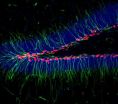(Press-News.org) DENVER (Dec. 14, 2010) – A decade after the 9/11 attacks, significant parts of America's most prominent downtowns remain largely sealed off as `security zones,' but a newly published study by University of Colorado Denver professor Jeremy Németh says this has led to blighted landscapes, limited public access and a need for a new approach to urban planning.
"Our most open, public cities are becoming police states," said Németh, assistant professor of planning and design whose study was recently published in Environment and Planning A. "While a certain amount of security is necessary after terror attacks, no amount of anti-terror architecture would have stopped the 9/11 attacks, or the Madrid or London subway bombings. And by limiting access and closing off space, we limit the potential for more `eyes on the street' to catch possible acts in the process."
But given the reality of continued terror threats like the recent plots to bomb downtown Portland, Ore. and New York City, Németh says `security zones' must now be considered a new type of land use similar to parks, open space and sidewalks.
"They must be planned and designed in ways that involve the public and are useful to downtown built environments," said Németh, director of the Master of Urban Design Program at the University of Colorado Denver College of Architecture and Planning. "Right now they consist of haphazard placement of metal gates, Jersey barriers and cones, but if these are to become permanent additions to the urban landscapes, we must understand how to integrate them into the existing built fabric."
Németh's study, the first to compare public and private security districts in more than one city, looked at areas of downtown Los Angeles, New York City and San Francisco and found that while each city values and protects potential targets equally, what is deemed off-limits varies widely.
For example, 35.7 percent of New York's civic center district is within a `security zone,' meaning it is accessible only to for those with proper clearance, while only 3.4 percent of San Francisco's civic center area has the same designation. Meanwhile, 23-acres of public space in Los Angeles sit in a `security zone.'
Németh said the zones not only affect the appearance of landmark buildings but also reflect an 'architecture of fear' as evidenced, for example, by the bunker-like appearance of embassies and other perceived targets.
Ultimately, he said, these places impart a dual message - simultaneously reassuring the public while causing a sense of unease.
And in the end, their effect could be negligible.
"Indeed, overt security measures may be no more effective than covert intelligence techniques," he said. "But the architecture aims to comfort both property developers concerned with investment risk and residents and tourists with the notion that terror threats are being addressed and that daily life will soon `return to normal.'"
INFORMATION:
The College of Architecture and Planning is among the largest colleges of architecture and related design and planning disciplines in the U.S. Located on the University of Colorado Denver's downtown campus and the University of Colorado-Boulder, CAP brings together faculty, students and practitioners who share common pursuits in communities of interest including: emerging practices in design, sustainable urbanism, the creation of healthy environments and the preservation of cultural heritage. CAP is one of 13 schools and colleges at UC Denver. The University offers more than 120 degrees and serves more than 28,000 students in Metro Denver and online. For additional news and information, please visit the UC Denver newsroom.
Study shows post-9/11 security zones blight landscape
Barriers, metal gates create 'architecture of fear'
2010-12-15
ELSE PRESS RELEASES FROM THIS DATE:
Cell of origin for brain tumors may predict response to therapy
2010-12-15
For patients with glioma, the most common primary brain tumor, new findings may explain why current therapies fail to eradicate the cancer. A UCSF-led team of scientists has identified for the first time that progenitor rather than neural stem cells underly a type of glioma called oligodendroglioma. This distinction explains why oligodendroglioma is more responsive to therapy than other brain tumors such as glioblastoma multiforme.
The finding is significant, the researchers say, because it gives cancer doctors and researchers new cellular pathways to target in developing ...
Once upon a time in the Intensive Care Unit ...
2010-12-15
MONTREAL, December 14, 2010 – The first few days after birth is an important time when babies learn to recognize the sound of their parents' voice and the parents in turn bond with their children. However, the separation between parents and newborns admitted to the intensive care unit can be very difficult and can disrupt the early development of this relationship.
Jan Lariviere, a nurse in the neonatal clinic and the Neonatal Intensive Care Unit (NICU) at The Montreal Children's Hospital (MCH) of the MUHC led an innovative research project that suggests reading to newborns ...
Optical water quality assessment
2010-12-15
Madison, WI December 14, 2010 -- Scientists at the U.S. Geological Survey (USGS) have proven that measuring fluorescence could improve source water monitoring during a study of the McKenzie River in Oregon. The study was designed to assess the amount, type and source of dissolved organic carbon that exists in all sources of drinking water.
Dissolved organic carbon can react with chlorine during water treatment and form halogenated compounds, commonly referred to as disinfection byproducts. Some of these byproducts are regulated by the U.S. Environmental Protection Agency, ...
Human umbilical cord blood cells found to enhance survival and maturation of key brain cells
2010-12-15
Laboratory culture (in vitro) studies examining the activity of human umbilical cord blood cells (HUCB) on experimental models of central nervous system aging, injury and disease, have shown that HUCBs provide a 'trophic effect' (nutritional effect) that enhances survival and maturation of hippocampal neurons harvested from both young and old laboratory animals.
"As we age, cognitive function tends to decline," said Alison E. Willing, PhD, a professor in the University of South Florida's (USF) Department of Neurosurgery and Brain repair and lead author for a study published ...
Tiny channels carry big information
2010-12-15
They say it's the little things that count, and that certainly holds true for the channels in transmembrane proteins, which are small enough to allow ions or molecules of a certain size to pass through, while keeping out larger objects. Artificial fluidic nanochannels that mimic the capabilities of transmembrane proteins are highly prized for a number of advanced technologies. However, it has been difficult to make individual artificial channels of this size – until now.
Researchers with the U.S. Department of Energy (DOE)'s Lawrence Berkeley National Laboratory (Berkeley ...
New survey device gets better information on teenage sexual behavior
2010-12-15
PROVIDENCE, R.I. [Brown University] — Brown University sociologists have developed a device to gather more reliable data about risky sexual behavior among Ethiopian teenagers and young adults than conventional face-to-face interviews can produce. Simple, portable, low-cost, and low-tech, the group's new nonverbal response card allows respondents to communicate nonverbally and confidentially during face-to-face interviews. Professors of sociology David Lindstrom and Dennis Hogan, and postdoctoral research associate Megan Klein Hattori published their findings in the December ...
Special section on stigma in Perspectives on Psychological Science: Group differences, not deficits
2010-12-15
Psychological scientists are faced with the arduous task of identifying distinctions between humans without stigmatizing groups of people based on these differences. In this special section of Perspectives on Psychological Science, a journal of the Association for Psychological Science, experts present reasons for why differences in gender, race, sexual orientation, and culture should not be framed as deficits within the field of psychology.
Stigma From Psychological Science: Group Differences, Not Deficits—Introduction to Stigma Special Section (http://pps.sagepub.com/content/5/6/687.full) ...
CSHL scientists identify elusive neuronal targets of deep brain stimulation
2010-12-15
Cold Spring Harbor, N.Y. – Shooting steady pulses of electricity through slender electrodes into a brain area that controls complex behaviors has proven to be effective against several therapeutically stubborn neurological and neuropsychiatric disorders. Now, a new study has found that this technique, called deep brain stimulation (DBS), targets the same class of neuronal cells that are known to respond to physical exercise and drugs such as Prozac.
The study, led by Associate Professor Grigori Enikolopov, Ph.D., of Cold Spring Harbor Laboratory (CSHL), is the cover ...
The ethics of biofuels
2010-12-15
In the world-wide race to develop energy sources that are seen as "green" because they are renewable and less greenhouse gas-intensive, sometimes the most basic questions remain unanswered.
In a paper released today by the School of Public Policy at the University of Calgary, authors Michal Moore, Senior Fellow, and Sarah M. Jordaan at Harvard University in the Department of Earth and Planetary Sciences, look at the basic question of whether these energy sources are ethical.
In addition to arguing that the greenhouse gas benefits of biofuel are overstated by many policymakers, ...
Researchers discover new signaling pathway linked to inflammatory disease
2010-12-15
Scientists at the University of California, San Diego School of Medicine have described for the first time a key inhibitory role for the IL-1 signaling pathway in the human innate immune system, providing novel insights into human inflammatory bowel disease (IBD) and potential new treatments.
The research, led by Jose M. Gonzalez-Navajas, PhD, and Eyal Raz, MD, a professor of medicine at UC San Diego, is published as a Brief Definitive Report in the December issue of The Journal of Experimental Medicine.
The researchers report that signaling by the interleukin 1 receptor ...
LAST 30 PRESS RELEASES:
National poll: Less than half of parents say swearing is never OK for kids
Decades of suffering: Long-term mental health outcomes of Kurdish chemical gas attacks
Interactional dynamics of self-assessment and advice in peer reflection on microteaching
When aging affects the young: Revealing the weight of caregiving on teenagers
Can Canada’s health systems handle increased demand during FIFA World Cup?
Autistic and non-autistic faces may “speak a different language” when expressing emotion
No clear evidence that cannabis-based medicines relieve chronic nerve pain
Pioneering second-order nonlinear vibrational nanoscopy for interfacial molecular systems beyond the diffraction limit
Bottleneck in hydrogen distribution jeopardises billions in clean energy
Lung cancer death rates among women in Europe are finally levelling off
Scientists trace microplastics in fertilizer from fields to the beach
The Lancet Obstetrics, Gynecology, & Women’s Health: Taking paracetamol during pregnancy does not increase risk of autism, ADHD or intellectual disabilities, confirms new gold-standard evidence review
Taking paracetamol during pregnancy does not increase risk of autism, ADHD or intellectual disabilities
Harm reduction vending machines in New York State expand access to overdose treatment and drug test strips, UB studies confirm
University of Phoenix releases white paper on Credit for Prior Learning as a catalyst for internal mobility and retention
Canada losing track of salmon health as climate and industrial threats mount
Molecular sieve-confined Pt-FeOx catalysts achieve highly efficient reversible hydrogen cycle of methylcyclohexane-toluene
Investment in farm productivity tools key to reducing greenhouse gas
New review highlights electrochemical pathways to recover uranium from wastewater and seawater
Hidden pollutants in shale gas development raise environmental concerns, new review finds
Discarded cigarette butts transformed into high performance energy storage materials
Researchers highlight role of alternative RNA splicing in schizophrenia
NTU Singapore scientists find new way to disarm antibiotic-resistant bacteria and restore healing in chronic wounds
Research suggests nationwide racial bias in media reporting on gun violence
Revealing the cell’s nanocourier at work
Health impacts of nursing home staffing
Public views about opioid overdose and people with opioid use disorder
Age-related changes in sperm DNA may play a role in autism risk
Ambitious model fails to explain near-death experiences, experts say
Multifaceted effects of inward foreign direct investment on new venture creation
[Press-News.org] Study shows post-9/11 security zones blight landscapeBarriers, metal gates create 'architecture of fear'



